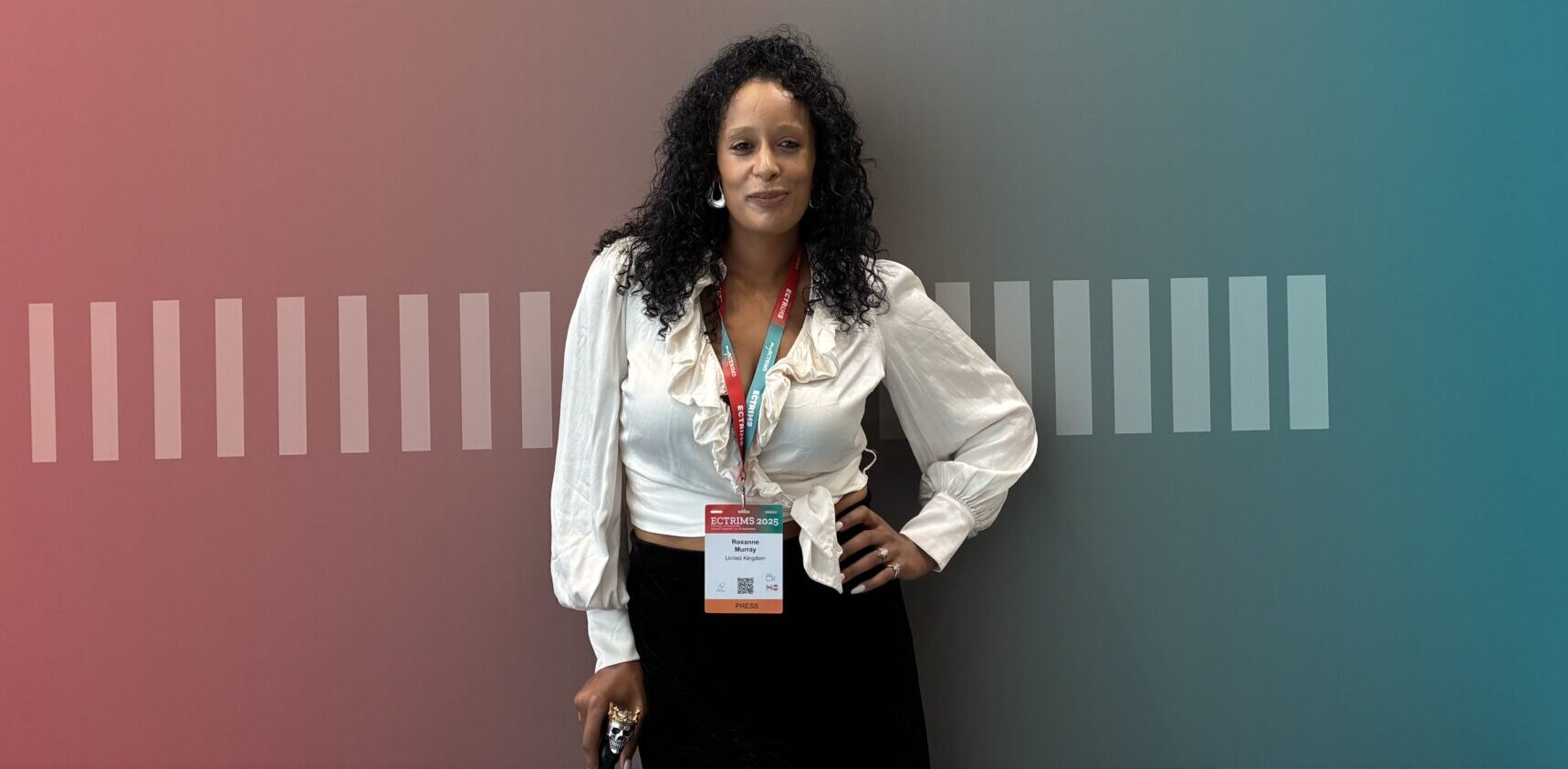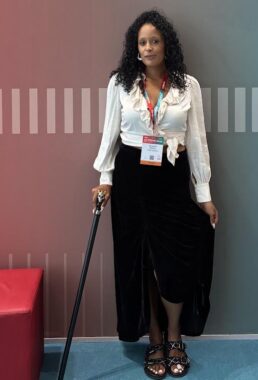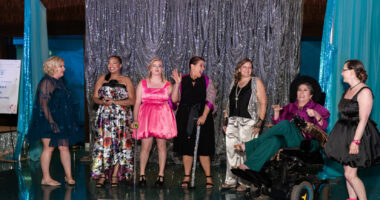‘The Multiple Sclerosis Fashionista’ champions adaptive fashion
ECTRIMS attendee advocates for apparel combining style and ease

Roxy Murray attends ECTRIMS 2025 in full fashionista mode. (Photo by Agata Boxe)
Roxy Murray was living up to being known as “The Multiple Sclerosis Fashionista” when she attended the 2025 European Committee for Treatment and Research in Multiple Sclerosis (ECTRIMS) conference in Barcelona, Spain, on a warm September afternoon.
Murray, who has multiple sclerosis (MS) and lives in London, applies her expertise in fashion to championing adaptive apparel — both professionally and personally.
Her striking outfit was equal parts Fashion Week-worthy and MS-friendly: a flowing, cream-colored top tied at the waist paired with a velvety black maxi wrap skirt that had an opening for the legs, accessorized with teardrop silver hoop earrings, black-and-silver supportive sandals, and a black cane topped with a skull handle.
“I’m looking at how people dress and how that traditional fashion could adapt to allow people to dress with style and ease,” Murray says.
Through consulting and other work, which includes hosting her own podcast, Murray aims to empower people with chronic conditions to live their lives fully and authentically. And with style.
Being fashionably adaptive – for all occasions
Murray was diagnosed with MS in 2014 while studying fashion. Adaptivity became part of her creative process as she figured out what to wear. Today, she looks for design features that simplify getting dressed — an important consideration when dealing with fatigue, spasms, or other MS symptoms.

Roxy Murray, known as “The Multiple Sclerosis Fashionista,” sports an outfit that’s stylish but still accommodates her MS needs. (Photo by Agata Boxe)
Besides being stylish, her ECTRIMS outfit was comfortable and easy to put on: The top Murray wore could be wrapped and didn’t have hard-to-manage buttons. Her skirt was shorter in the front than in the back to help prevent tripping and give her legs more freedom of movement. The soft material was not too heavy, in case she started experiencing hypersensitivity in her legs.
A highlight of her ensemble was her cane, handcrafted in Ukraine. It’s Murray’s favorite in her collection of 23 canes. Its ergonomic handle was also removable.
“I love the fact that I can just change the handle no matter how I feel,” she says,“ and change it for different outfits.”
Murray draws upon her education and her experience as a fashion stylist in her work as a consultant, where she advises brands on making clothes more adaptive.
Brands and designers in the U.K. are starting to recognize the importance of the so-called purple pound — which refers to the spending power of consumers with disabilities. Companies that want their clothes to be marketable and wearable for as many people as possible turn to experts such as Murray for guidance.
One of Murray’s goals is to get brands to expand adaptivity beyond basic clothing items such as tops and pants. She wants to see special occasion wear, for events like galas or weddings.
“That’s the next step for me,” she says, “because I think there’s less adaptive clothing in those spaces.”
Wearing many professional hats requires staying productive
Murray wears many professional hats. In addition to consulting, she is a production manager for an MS charity and the founder and host of “The Sick and Sickening Podcast,” which focuses on navigating disability and chronic illness.
Self-care helps her conserve energy and manage MS symptoms, such as fatigue. She also plans her days strategically, scheduling the most cognitively demanding tasks for the morning, when she feels most ready to tackle them.
But her productivity is driven by her desire to create a better world for people with MS. It’s a world where everyone has a voice and identities are well represented.
“I’m a pansexual person, so I’m part of the queer community,” says Murray. “I have a disability. I’m a person of color.”
Meanwhile, she finds sustenance and inspiration from her work and her support network.
“I love what I do,” Murray says. “I love my community.”








